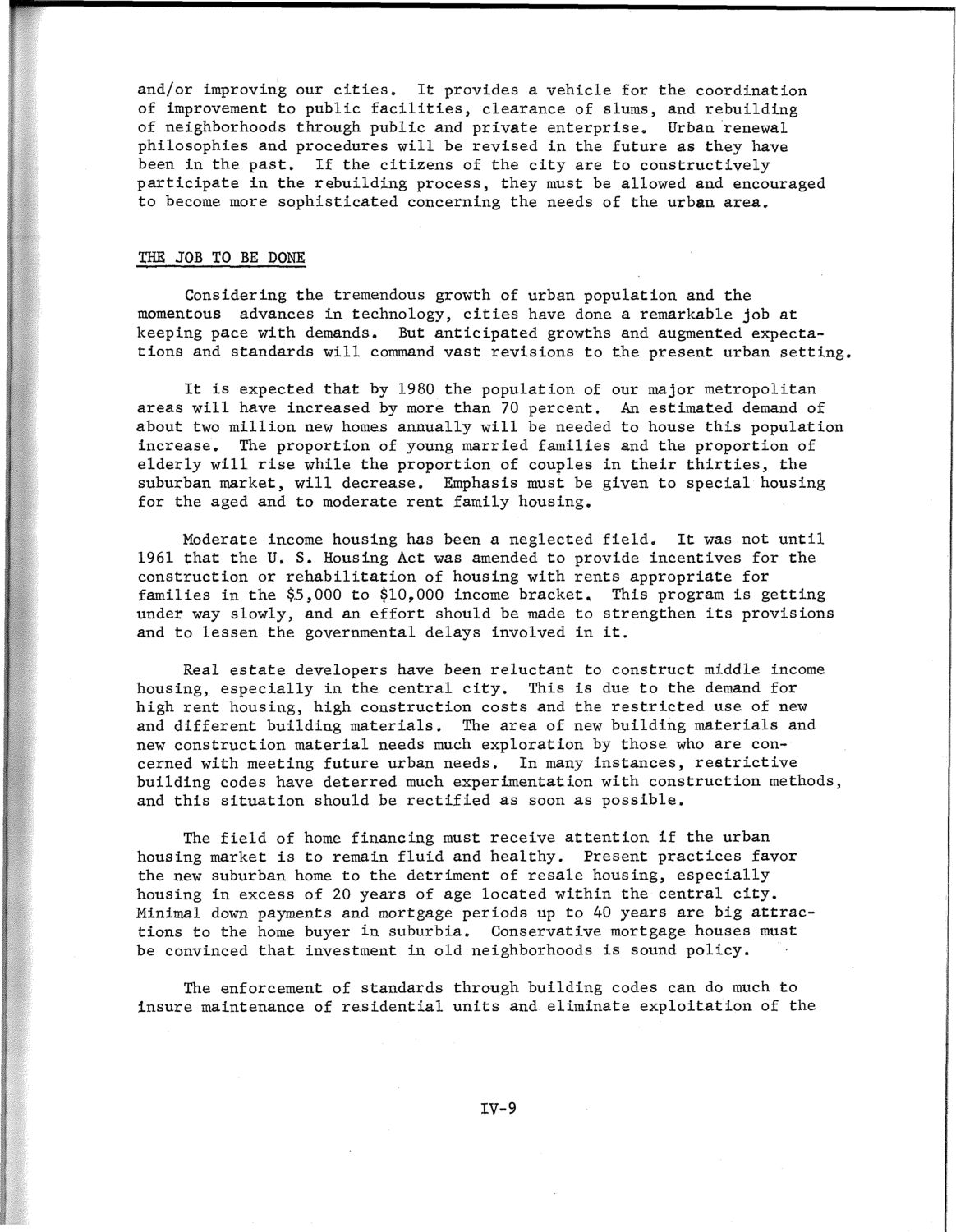| |
| |
Caption: SWE - Proceedings of the First International Conference of Women Engineers and Scientists
This is a reduced-resolution page image for fast online browsing.

EXTRACTED TEXT FROM PAGE:
and/or improving our cities. It provides a vehicle for the coordination of improvement to public facilities, clearance of slums, and rebuilding of neighborhoods through public and private enterprise. Urban renewal philosophies and procedures will be revised in the future as they have been in the past. If the citizens of the city are to constructively participate in the rebuilding process, they must be allowed and encouraged to become more sophisticated concerning the needs of the urban area. THE JOB TO BE DONE Considering the tremendous growth of urban population and the momentous advances in technology, cities have done a remarkable job at keeping pace with demands. But anticipated growths and augmented expectations and standards will command vast revisions to the present urban setting. It is expected that by 1980 the population of our major metropolitan areas will have increased by more than 70 percent. An estimated demand of about two million new homes annually will be needed to house this population increase. The proportion of young married families and the proportion of elderly will rise while the proportion of couples in their thirties, the suburban market, will decrease. Emphasis must be given to special housing for the aged and to moderate rent family housing. Moderate income housing has been a neglected field. It was not until 1961 that the U. S. Housing Act was amended to provide incentives for the construction or rehabilitation of housing with rents appropriate for families in the $5,000 to $10,000 income bracket. This program is getting under way slowly, and an effort should be made to strengthen its provisions and to lessen the governmental delays involved in it. Real estate developers have been reluctant to construct middle income housing, especially in the central city. This is due to the demand for high rent housing, high construction costs and the restricted use of new and different building materials. The area of new building materials and new construction material needs much exploration by those who are concerned with meeting future urban needs. In many instances, restrictive building codes have deterred much experimentation with construction methods, and this situation should be rectified as soon as possible. The field of home financing must receive attention if the urban housing market is to remain fluid and healthy. Present practices favor the new suburban home to the detriment of resale housing, especially housing in excess of 20 years of age located within the central city. Minimal down payments and mortgage periods up to 40 years are big attractions to the home buyer in suburbia. Conservative mortgage houses must be convinced that investment in old neighborhoods is sound policy. The enforcement of standards through building codes can do much to insure maintenance of residential units and eliminate exploitation of the IV-9
| |